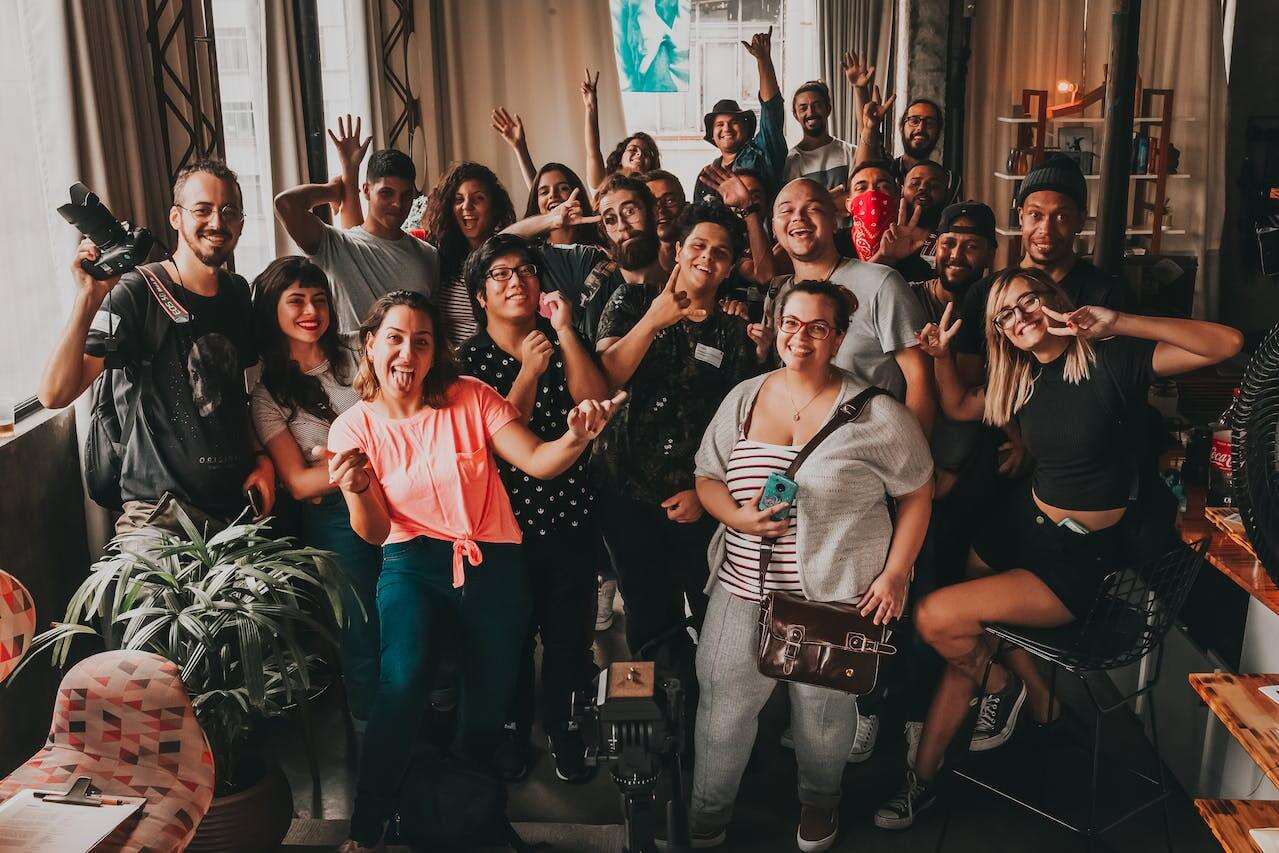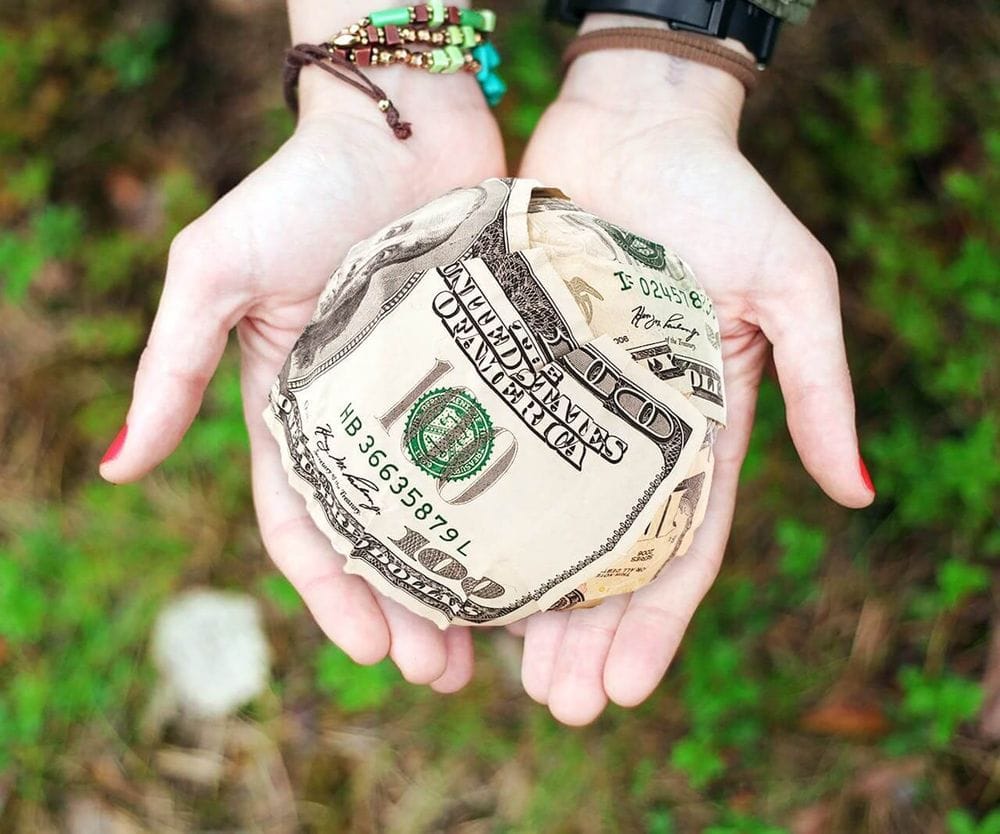How to Ask for Donations: A Step-by-Step Guide

Looking to raise funds for a passion project or cause you care about? Are you a non-profit organization, a community group, or an individual in need but don't know how to ask? You've come to the right place. Here at Bold.org, we know just how daunting of a task asking for donations can be, but we also know with the right approach, solid fundraising strategy, and positive attitude, you can change someone's life and your own.
In this step-by-step guide, we will walk you through the process of asking for donations, from understanding the basics of fundraising to evaluating your fundraising efforts. Let's get started!
If you are interested in becoming a donor, please visit Bold.org for more information and create your profile today!

The Basics of Fundraising
Before we get into it, it's important to understand the role of asking for donations and the role they play in supporting your cause. Donations are not just monetary contributions; they are the results of diligence, support, and belief in the work that you are doing. They inspire you to make a difference, whether it's by providing resources for research, supporting community initiatives, or helping those in need. Asking for donations can be challenging but also rewarding.
When people or organizations make a donation, they are investing in the positive impact your cause can have on society. These contributions allow you to implement programs and initiatives that address issues around your community, which can improve the lives of so many people. Without donations, important projects would struggle to get off the ground or even cease to exist. That's why it's crucial to know how to ask for donations because if done properly, you may get recurring donors on your side for any future campaigns or fundraisers.
The Importance of Donations
Donations are the bread and butter of any fundraising campaign. Without the support of peers, businesses, and organizations, it can be challenging to achieve your fundraising goals. That's why it's key to emphasize the importance of donations and how they directly impact the work you are doing.
So, let's say you're running a nonprofit organization that focuses on environmental conservation. Donations can help fund reforestation efforts, wildlife conservation programs, or educational campaigns. By showcasing the direct impact of donations, you can make donors feel more connected to your cause.
The positive ripple effect that donations can create is endless. Just one contribution can lead to the planting of hundreds of trees or the protection of endangered species. It can even create a way to educate future generations about the importance of environmental care. It doesn't matter how big or small. Every donation has the power to make a difference.
Now, let's dive into everything you need to know on how to ask for donations.

How to Ask for Donations: The Guide
Step 1: Identifying Your Cause
So, how do you know where to start? Easy. Before you can start asking for donations online or soliciting donations in general, you first need to figure out your cause. Ask yourself: What are you raising funds for? What problem are you trying to solve? By clearly identifying your cause, you can create a compelling narrative that resonates with potential donors.
Step 2: Setting Your Fundraising Goals
Now that you have your cause, you want to make sure you have clear fundraising goals. We don't want you to start asking for donations without direction, so it's important to determine how much money you need to start and then set a realistic timeframe for achieving your goal.
For example, if you're organizing a fundraising campaign for a medical research project, your goal might be to raise $50,000 within a six-month period. By setting specific goals, you can create a sense of urgency and motivate potential donors to contribute to your cause.
Remember, fundraising is not just about collecting money; it's about building a community of supporters who believe in your cause. By effectively communicating the importance of donations, identifying your cause, and setting goals, you can inspire others to join you in making a difference in your community and the world.
Step 3: Preparing Your Fundraising Strategy
Now that you know your cause and donation goals, it's time to prepare your fundraising strategy. It's key to know your organization's mission and purpose. A well-planned strategy will increase your chances of success and help you navigate the complexities of asking for donations.
Having a fundraising strategy will be the roadmap that guides you through the entire process and ensures that you stay focused on the goal at hand. With a clear strategy in place, you can make informed decisions and use your resources effectively.

Step 4: Build Your Fundraising Team
We can't forget a team. No serious fundraising event or campaign is successful without a dedicated team. Support and like-minded people on your side who believe in your cause are key! Surround yourself with passionate individuals who share your vision and are willing to contribute their time and expertise to the cause like you. Don't be afraid to delegate. Assign specific roles and responsibilities to each team member, ensuring everyone is hands-on and working towards the goal.
Building a fundraising team is not just about finding people with the right skills and experience. It's about creating a supportive and collaborative environment where everyone feels valued and motivated. Together, you will build a sense of camaraderie and encourage each other to openly communicate your fundraising ideas and bring them to life. Remember, teamwork makes the dream work!
Step 5: Crafting Your Fundraising Message
Last but not least, effectively communicating the organization's mission and goal will make or break the outcome when asking for donations. Take the time to draft a message that clearly conveys the importance of your cause and why prospective donors should support it.
When crafting your message, consider the emotions you want to evoke in your audience. Storytelling is one of the most effective ways to get through to people. By sharing personal experiences and stories, you're building trust amongst your community and are seen as more than just an organization there to ask for donations. You become relatable, and it makes donors feel connected to your cause. By doing so, it can significantly increase the likelihood of them making a donation.

Different Ways to Fundraise
Now that you have your guide on how to ask for donations, it's time to raise money! But how? Luckily for you, it can be as easy as a click of a button.
In today's digital age, there are numerous channels through which you can ask for donations. From traditional methods such as direct mail campaigns and phone calls to online donation platforms and social media, it's important to choose the right channels for your target audience. Below, you will find a list of a few different ways to raise funds:
- Peer-to-peer fundraising - this can be through personal events like crowdfunding and even birthdays! Have you ever heard of a rent party? Well, it works the same; you can throw your own party to help raise money for your cause.
- Hold a fundraising event - the list of kinds of events is endless, but here are a few: a fun run, community barbecue, scavenger hunts, karaoke night, bowling night--the list goes on and on. There is no limitation to the kind of event you host. Just make sure it's fun and meaningful!
- Phone donations - this was a more popular option before the digital age, but a good ol' cold call to businesses can still do the trick. You can even send out a text to give a helping hand. And if you're feeling up for the challenge, an in-person meeting works, too.
- Create an online donation form - there are plenty of online platforms that allow you to create your own online donation receipt that can help you raise money with just the click of a button.
- Fundraising letters - another old-school method that still has its charm. And since we live for technology, you can create an email version of the letter that can help reach a much broader audience.
- Personal connection - there's nothing like sitting face-to-face with someone and simply asking. This way, you can create a personal bond with individual donors and tell them all of the ways they can help. (i.e., online donations, fundraising events, online fundraising, etc.)
- And if all else fails, ask family members. Sometimes, the best support is in the comfort of your own home, so don't be afraid to reach out and ask!

Approaching Potential Donors
Now that we've laid the groundwork for your fundraising campaign, it's time to approach prospective donors. Even though asking for money can be scary, it's important to encourage donors, so we want to emphasize that fundraising is not just about asking for money. It's about building relationships, creating connections, and inspiring others to join your cause. By taking a thoughtful and personalized approach, you can make a lasting impact.
Identifying Potential Donors
First, let's start by identifying individuals, businesses, and organizations that align with your cause and have a history of supporting similar campaigns. Look for connections within your network and research local groups that focus on causes related to yours.
Remember: not everyone will be able to support your cause and donate. Some donors may prefer to contribute their time or resources. Offering different ways people can get involved with nonprofit organizations can help you gain a broader audience and create long-term relationships.
Personalizing Your Approach
A personal touch can make all the difference when asking for donations. Aside from sending emails or letters, take the time to personalize your approach. Address donors by name and tailor your message to reflect their interests and values. Research shows that personalization can significantly increase donor engagement.
When personalizing your approach, consider highlighting specific projects that align with the donor's interests. Show them you've done your research and how their contribution can make a tangible difference and be part of something meaningful.
Timing Your Ask
Timing is key. When it's time to ask, consider the timing of your fundraising campaign and any upcoming events or milestones that might be relevant. For example, if you're raising funds for a children's charity, launching your campaign during the holiday season when people are often in a more generous and giving mindset can work to your advantage.
Also, keep in mind that building relationships with donors takes time. Don't rush the process; instead, focus on nurturing the relationship and establishing trust before asking for a specific donation amount.

Making the Ask
Now that you've prepared yourself to approach donors strategically, it's time for the donation- ask. While it may be intimidating, remember that you are the voice for something meaningful, and there are effective techniques to help you navigate this process.
When asking for a donation, it's essential to be clear, concise, and confident. Clearly communicate how much you are requesting and how the funds will be used to make a difference. Be prepared to answer any questions donors may have and provide them with the correct information to support your cause.
Also, using visual aids such as info graphs and impact reports can not only make your message more compelling but also help donors visualize the impact of their contribution. You want to encourage potential donors to remain invested in your cause. Visuals can help with that.
Please note: it's important to understand the psychology behind the donation forms and making the ask. Research has shown that wording the request in a way that highlights the potential benefits to the donor can significantly increase the likelihood of a positive response and possible recurring donations. By emphasizing how their involvement will make a difference, you can create a stronger personal connection and motivate them to support you in the future.

Handling Objections and Rejections
Not every ask is going to be a yes. Closed mouths don't get fed, but not everyone will want to feed you. Receiving objections or rejections is a normal part of the fundraising process. Don't be discouraged by a "no." Instead of letting it get you down, see it as an opportunity to learn and improve your approach.
When faced with objections, listen attentively. Address any concerns new donors may have, provide reassurance, and even ask if there is anything your organization can do to help motivate them to support you. Remember, building relationships takes time, and even if someone doesn't donate today, they may be more inclined to support your cause in the future.
It is important to approach objections with a positive mindset and view them as feedback. Analyze the objections you encounter and use them as motivation to improve your fundraising strategy. Developing a strong network of supporters and advocates can help overcome the "no's" from major donors.
Following Up After the Ask
Now that you've made the ask, you can relax. The worst part about donation requests is the "no," so once you've overcome the worst, it's important to follow up with donors. Express your gratitude for their time and your donation requests and consideration, regardless of their response. If someone has made a donation, send a personalized thank-you note or email to acknowledge their contribution and reaffirm the impact their donation will have.
Remember, profit or nonprofit fundraising is an ongoing process, and building relationships with donors requires time, effort, and continuous communication. By consistently engaging with donors and expressing your appreciation, you can create a strong foundation for long-lasting support and impact on your cause.

Maintaining Relationships with Donors
Securing your bag with a donation can be the beginning of a long-term relationship with your supporters and individual donors. To maintain their engagement and encourage repeat donations, you need to show appreciation and keep them connected to your cause.
Showing Appreciation to Donors
Have you ever heard the saying, "You catch more bees with honey?" Well, the same can be said when asking for donations. Recognize and acknowledge the value of your donors' contributions. Send regular updates on your donation page about the progress of your fundraising campaign, and share success stories and the positive impact their donations have made in your community. Showing donors your appreciation can lead to more success.
Encouraging Repeat Donations
The key to long-term fundraising success lies in encouraging repeat donations. Cultivate relationships with your donors by providing regular and meaningful opportunities for them to get involved. Whether it's through volunteer opportunities, fundraising events, or ongoing campaigns, keep your donors engaged and excited about the impact they can make.
Evaluating Your Fundraising Efforts
As your pledge campaign progresses, it's crucial to evaluate your efforts to ensure you're on track to meet your goals. This will help you identify areas where you can improve and make necessary adjustments.
Adjusting Your Fundraising Strategy
If certain aspects of your fundraising strategy are not producing results, don't be afraid to make changes to your strategy. Experiment with different fundraising channels, messaging techniques like a donation request email, or types of events to find what works best for your cause and target audience.

Frequently Asked Questions About How to Ask for Donations
How should you ask for donations?
While there is no one right way to ask for donations, we recommend following the steps we provided in this article. Not only is it a roadmap to your future success with fundraising, but it keeps you organized and ready for when it's time to ask for money.
How do you handle donation rejections?
It can feel disheartening to get rejected by a donor, but it's nothing you can't overcome. View the rejections as ways to improve your strategy. By listening to your donors and considering what they say, you can improve your approach and potentially get the "yes" on the next go-round, so don't be discouraged! A no today can be three yeses tomorrow. Also, remember the follow up! Show your donors how committed you are to your cause.
What is most important when asking for donations?
When it comes to asking for donations, everything is important. From solidifying your cause to your follow up, every step counts. Even how you ask for more money is important. One of the most important aspects of asking for donations is identifying your cause. You want to build trust with your potential donors and personalize your fundraiser.
Are you interested in fundraising or starting your own scholarship fund? Check out our blog and learn how to become a donor today!